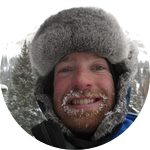Cover Story in High Country News!
Check out Wudan Yan's excellent article about our project that was the feature story in the latest High Country News! We've already received four new Beartooth otter reports since the magazine hit ...
Citizen Science Success!!!
Despite a rapidly melting snowpack and difficult snow tracking conditions, the 16 volunteers who participated in our Alpine Otters project in the Beartooth Mountains on May 20, 2018, recorded four ...
Can you pass the wildlife tracker quiz?
Just wanted to give all of our experiment.com backers a quick update on our upcoming citizen science project, which is only one month away on Sunday, May 20.We recruited 48 potential volunteers at ...
THANK YOU!!!
What's Next: Defining Methods, Recruiting Volunteers, and Finishing Fundraising
As our crowdfunding campaign comes to a close, we would first like to thank the 46 backers who helped us exceed our funding goal. Along with fully funding the citizen science part of our project an...
Who We Are: The Yellowstone Ecological Research Center (YERC)
In 1995, when grey wolves were released in Yellowstone National Park as part of their U.S. Endangered Species Act recovery plan, coyotes were among the residents hearing their first howls. So were ...
Alpine Otters... Now Arctic Beavers!
Great story in the New York Times today about beavers moving into the Arctic, most likely as a result of climate change. Like our upcoming Alpine Otters project, this research sheds light on nature...
Study Area Profile: The Beartooth Plateau
The Beartooth Plateau is a distinctive piece of topography on numerous fronts. For one, it is the largest landmass over 10,000' in the contiguous United States, home to the 40 tallest peaks in Mont...
Bringing Space Age Technology to the Beartooth Plateau
Our project will use snow tracking and scat analysis, two of the oldest, simplest, and most effective techniques devised for learning more about animals like river otters. But how can we learn more...

